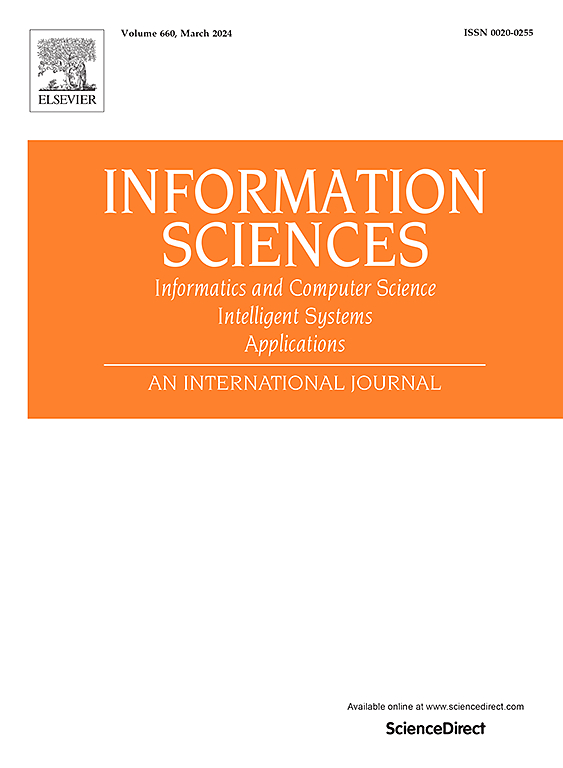基于位置编码的一维异常检测方向感知卷积自编码器
IF 8.1
1区 计算机科学
0 COMPUTER SCIENCE, INFORMATION SYSTEMS
引用次数: 0
摘要
一维异常检测仍然具有挑战性,因为现有的方法不能充分地模拟广泛分离的元素之间的相互作用,并且忽略了局部的相互作用模式。为了解决这些限制,本研究提出了一种基于空间变换的方向感知卷积自编码器框架,该框架使用位置编码(SDP-CAE)进行一维异常检测。与以往的方法不同,SDP-CAE独特地利用多个空间填充曲线将一维数据转换为二维数据,有效地捕获了丰富的局部特征交互,克服了传统一维建模的局限性。空间填充曲线可以增强一维数据中不同元素之间的相互作用,丰富二维空间中的局部特征模式。此外,我们引入了一种非对称的双流卷积自编码器架构,该架构采用水平和垂直卷积操作来明确捕获转换数据中特定方向的交互。该体系结构通过对局部空间上下文敏感的交互建模,显著改善了异常检测。采用位置编码(PE)作为辅助机制,增强高频细节的表征,进一步提高模型对细微异常的敏感性。在基准数据集上进行的大量实验表明,我们的方法明显优于最先进的方法,清楚地验证了所提出的空间变换和方向感知建模机制的有效性和必要性。本文章由计算机程序翻译,如有差异,请以英文原文为准。
Direction-aware convolutional autoencoder based on positional encoding for one-dimensional anomaly detection
One-dimensional anomaly detection remains challenging owing to existing methods inadequately modeling interactions between widely separated elements and neglecting local interaction patterns. To address these limitations, this study proposes a space transformation-based direction-aware convolutional autoencoder framework using positional encoding (SDP-CAE) for one-dimensional anomaly detection. Unlike previous approaches, SDP-CAE uniquely applies multiple space-filling curves to transform one-dimensional data into two-dimensional data, effectively capturing rich local feature interactions and overcoming the limitations posed by traditional one-dimensional modeling. Space-filling curves can enhance the interactions among different elements of one-dimensional data to enrich local feature patterns in a two-dimensional space. Furthermore, we introduce an asymmetric two-stream convolutional autoencoder architecture that employs horizontal and vertical convolution operations to explicitly capture direction-specific interactions within the transformed data. This architecture significantly improves anomaly detection by modeling interactions that are sensitive to the local spatial context. Positional encoding (PE), employed as an auxiliary mechanism, enhances the representation of high-frequency details to further prompt the sensitivity of the model to subtle anomalies. Extensive experiments conducted on benchmark datasets demonstrate that our method significantly outperforms state-of-the-art methods, clearly validating the effectiveness and necessity of the proposed space transformation and direction-aware modeling mechanisms.
求助全文
通过发布文献求助,成功后即可免费获取论文全文。
去求助
来源期刊

Information Sciences
工程技术-计算机:信息系统
CiteScore
14.00
自引率
17.30%
发文量
1322
审稿时长
10.4 months
期刊介绍:
Informatics and Computer Science Intelligent Systems Applications is an esteemed international journal that focuses on publishing original and creative research findings in the field of information sciences. We also feature a limited number of timely tutorial and surveying contributions.
Our journal aims to cater to a diverse audience, including researchers, developers, managers, strategic planners, graduate students, and anyone interested in staying up-to-date with cutting-edge research in information science, knowledge engineering, and intelligent systems. While readers are expected to share a common interest in information science, they come from varying backgrounds such as engineering, mathematics, statistics, physics, computer science, cell biology, molecular biology, management science, cognitive science, neurobiology, behavioral sciences, and biochemistry.
 求助内容:
求助内容: 应助结果提醒方式:
应助结果提醒方式:


